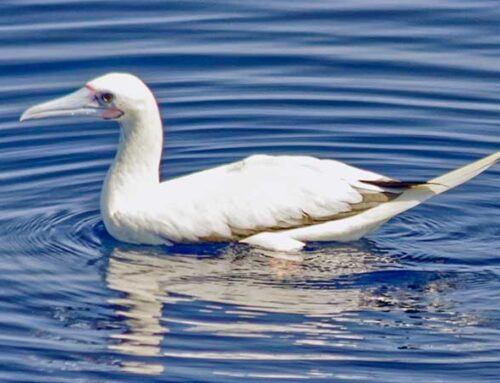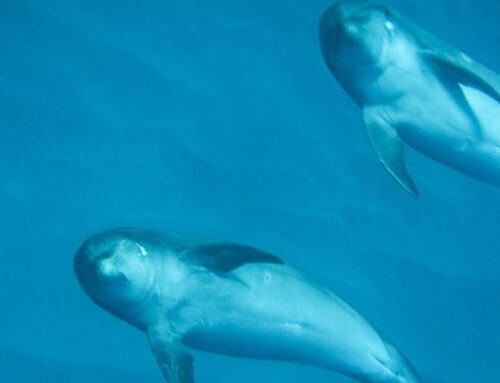Humpback Whales in Hawaii
In The Company of Whales – In the Wake of Giants; Life is a Breach – Then you Dive.
Hawaii, the beginning of life
The Kumulipo, a Hawaiian creation chant, speaks of the birth of all the animals and plants on land and in the sea. It is said that the plants and animals were counterparts of each other, creating a special bond between the two. Within the chant, the palaoa (older word used to refer to whales, whale bone and whale carcasses) was said to be born living in the sea and its counterpart, the `aoa (sandalwood tree), was its guardian living on land. The `aoa, valued for its fragrant wood, was abundant in the late 18th century. Then after being greatly overharvested in the early 1800’s for its fragrance, the trees plummeted near extinction. As the Kumulipo suggests, the `aoa could no longer guard its counterpart, the palaoa. Therefore, the palaoa, which was once abundant in the early 1800’s, was overharvested for its teeth, bone and oil then its population had also greatly declined near extinction – Hawaiian Islands Humpback Whale Sanctuary, cultural brochure
While palaoa is more often used to describe a sperm whale, kohola is used for other whales. Recently the humpback whale.
FEBRUARY IS HUMPBACK WHALE AWARENESS MONTH!
For more information about Humpback Whale Awareness Month Events and other upcoming sanctuary events such as NOAA’s annual Volunteer Whale Count.
Humpback Whale Behavior
Humpback whales are an endangered species. In the past, the global humpback whale population size was about 750,000 to 2 million animals (!). The current global population is about 30 to 40 thousand. With about 66% of the North Pacific population wintering in Hawaii each year, up to 10,000 humpback whales could come to Hawaii this winter.
Dolphins are family-based and highly social, but whales are anti-social. If you see two 40-foot-long grown whales together, usually one is a female and the other a male. If you see three, it’s usually two beaux vying for her attention.
Other cetaceans common to our area are 22 species of dolphins and other whales such as Pilot Whales.
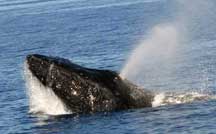
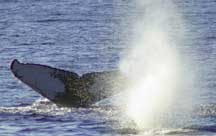
Blow (formerly known as “Spout”)
When a whale dives, air is compressed in its lungs. Upon reaching the surface, the air is exhaled through the whale’s blowholes. The exhaled air expands, causing the temperature to decrease, thereby condensing into water vapor. The blow is quite visible and can reach heights of 20 feet. In concert with the blow is the sound of rushing air that can be heard up to 800 feet away. The blow of a humpback whale is unique to each animal and a great way to distinguish between types of whales. On average, adult humpback whales take a breath every ten to fifteen minutes, but can remain submerged for as long as forty-five minutes. Calves must rise to the surface every three to five minutes to breathe.
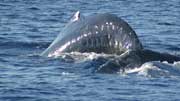
Round Out or Peduncle Arch
When preparing for a deep dive, humpbacks will arch (hump) their back and raise their tail flukes above water. It is this pronounced arching of the back that has earned the humpback whale its common name.
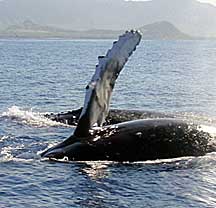
Pec Slap
The humpback’s pectoral fin is longer than that of all other species of whales, measuring one-third the whale’s body length, or approximately twelve to fifteen feet. Humpbacks will often roll onto their side or back and slowly slap the water’s surface with one fin or both fins simultaneously. The slapping of fins may serve as a communication signal to other whales.
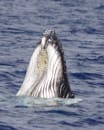
Head Rise (aka Spyhop)
Some believe this behavior allows the humpback whale to get a better look at activity going on above the surface. A whale slowly rises vertically toward the surface, poking its head out of the water to below its eyes. Usually the whale is stationary and the flippers are outstretched beneath the surface. Occasionally whales will clear the water first with their flippers or tails, creating a circular window, from which they can more easily look through the surface of the water.
Bruce Mate’s theory on spy hopping goes against the conventional wisdom that it’s to see what is happening. Mate suggests that it’s to help the whales hear better; he has observed that during spy hop behavior the eyes do not always come above the surface of the water. During migration, it may be to hear the surf since their route follows the coastline.

Competitive Pods
Groups generally composed of males surrounding a female. The female frequently remains in the physical center of the group. The male closest to the female is termed the primary escort, and defends the position closest to her in the center of the group. Displays between males include visual displays (inflating ventral pleats, blowing bubbles), chases, and even physical strikes. Humpback whales in competitive pods may make sounds that are different from the long, complex, highly patterned and stereotyped “song.”
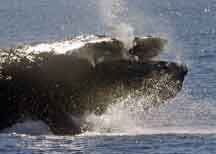
Jaw Clap
The whale opens and closes its jaws, clapping them together, at times audibly! This behavior is common in competitive or surface-active groups when males are competing for a female. You can almost see the baleen on the whale to the right…
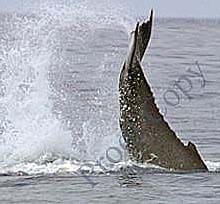
Tail Slap
A tail slap consists of a whale raising its tail flukes out of water and slapping them forcefully on the surface of the water. When the flukes hit the water, a loud resonant noise can be heard for miles. Humpback whales are known to repeat this behavior over and over. This behavior may serve as a warning to others in the vicinity.
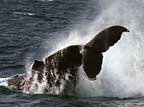
Peduncle Slap (or Lobtail)
An aggressive display where the humpback whale will thrash the surface of the water by whipping its upraised flukes from side to side. Humpbacks will slap the surface of the water as a warning signal to others or bash other whales during aggressive competition.

Head Lunge
The head lunge of the male whale is the equivalent of a dog baring its teeth at its opponent. The whale on the bottom is expelling water that it used to “puff up” its throat area and appear bigger .However the whale on the top is about to knock it out of him!
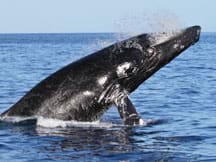
Head Slap
Whale lunges or leaps partially out of the water, striking the underside of the chin forcefully on the surface of the water. Head slapping behavior often occurs after a breaching sequence and its meaning is unknown.
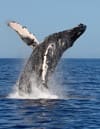
Breach
Everyone’s favorite! A powerful acrobatic display where the humpback uses its tail to launch itself out of the water. With just a few pumps of its tail, the humpback can propel its entire body into the air, landing back onto the surface with a resounding splash. The purpose of this spectacular behavior is still unknown. Some serves as a form of communication, or maybe just a form of playful activity for the humpback.

Nursing
Humpback calfs do need to breath at some point, so can’t nestle in and suckle away like a puppy or kitten. Also, the calf’s “lips” aren’t flexible enough to form a suction around the mother’s nipple like other mammals. To do so, a baby whale curls its tongue. A good suction is assisted by interlocking flaps on either side of the tongue, as the mother ‘shoots’ the milk into and beyond the tongue – you can see these above (along with the white colored baby baleen). As the baby whale gets older and is no longer suckling, the flaps will mostly disappear. Cool, huh?
Whale Song
Humpbacks have a range that covers eight octaves, from a bass so low that humans can’t hear it to a magnificent soprano. Their highly structured songs include multiple themes that are constantly repeated and even rhyme.
The songs last up to 30 minutes, and the whales embellish like jazz musicians, seeing who can improvise in some attractive way better than the other whale. Whales sing to one another over hundreds of miles and use their songs to navigate across oceans. Humpback whales travel thousands of miles as a group, singing to each other as they go. They can also communicate with each other over thousands of miles of ocean. Singing is part of their social system and community.
Aside from navigation and attracting mates, singing is also believed to establish a hierarchy among male humpbacks. Singing breaks out among migrating whales as they start to mix and continues not just in their breeding grounds, but to attract mates even during the feeding season.
“No living animals have captured our imaginations as have the great whales… They fire our imaginations and stab at our emotions. They inspire our art, literature, and music. And so they should. The indescribable blend of grace, power, and beauty of a whale as it glides underwater, leaps toward the sky, or simply lifts its flukes and slides into the sea symbolizes a vanishing poetry of the wild.”
– Dr. James Darling, With The Whales
“I’m not a very sentimental person. I don’t think we ought to save whales because they’re cuddly or pettable. But it’s simply an amazing experience having those whales roll over and look at you eye to eye. There’s really an interspecies contact there. There’s an intelligence…. That’s about as far as I want to go with that, but it’s… extraordinary.”
– Robert F. Kennedy, Jr.

